SEGA MEGA DRIVE/GENESIS AREA | HISTORY FEATURE
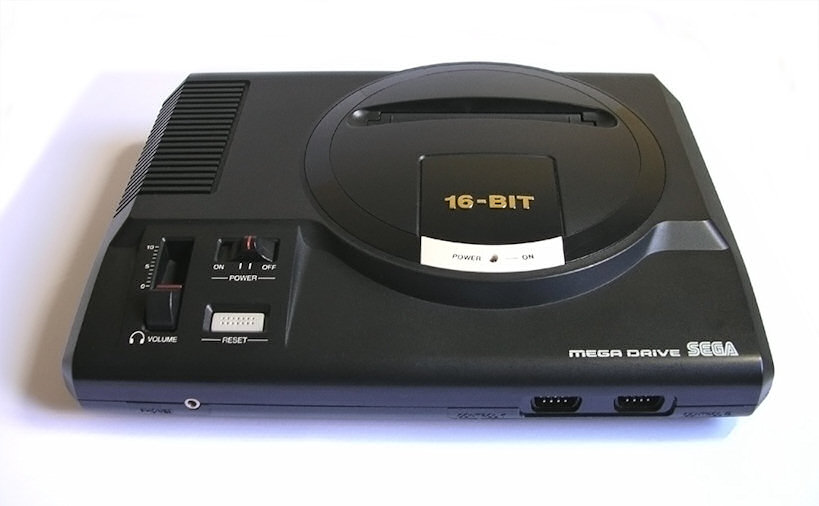
HISTORY
The SEGA Mega Drive/Genesis (as known in the US) was a revolutionary 16-Bit console at the time and is the system attributed to the historical success the company enjoyed and as such is an essential part of gaming history.
It was the console that broke the monopolies Nintendo had on the console industry by inspiring the first great console war that took place from boardrooms to playgrounds winning SEGA a substantial market share bringing them from an $813 million company in 1989 to a $3.6 billion conglomerate by 1993.
This battle, most fiercely fought in North America, was not only good for profits but it was the catalyst for taking the image of gaming away from the player in seclusion to the masses where it is today, and oh yes, introduced us to the to the phenomenon that is Sonic The Hedgehog.
Inception
Around 1987 the newer computers of the day like the Commodore Amiga and Atari ST, along with arcade machines were looking rather superior to home consoles with their 16-Bit designs.
The main reason for this lay with Nintendo. Their massive grip on the 8-Bit console market with the Famicom/NES hardware (quickly going the way of the dinosaur) was keeping the sector in a primitive state. The Master System though superior did not fare well and Nintendo were in no rush to launch their successor. The time was right to create a new console based upon 16-Bit technology.
SEGAs considerable success in the arcades - something having remained constant through the years – saw their System 16 cabinets and alike driving highly popular titles like Afterburner 2, Space Harrier and Shinobi etc. As the name System 16 implies these were 16-Bit arcade machines.
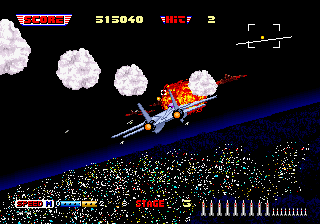 After Burner 2 |
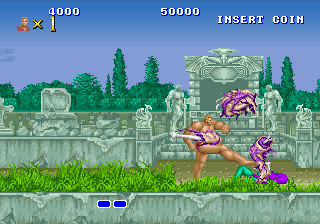 Altered Beast |
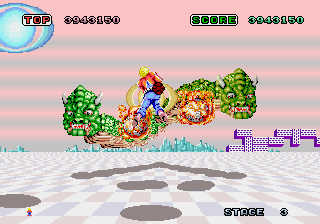 Space Harrier |
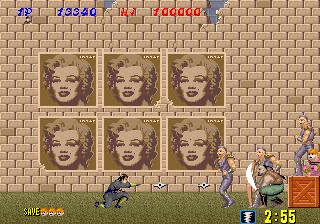 Shinobi |
CEO of SEGA, Hayao Nakayama (Hakayama) thought the time was right to bring that arcade technology into the home. But for SEGA to be successful they could not simply try again to steal Nintendo’s market. They needed to create a new market of their own, and already had the technology to do so.
The system was chiefly designed by Masami Ishikawa. The intention was to produce a new console and still maintain backwards compatibility with the Master System/Mark III.
The internals of the Mega Drive were basically derived from a System 16 arcade board. The CPU was slowed down from 10MHz to 7.87MHz (presumably to keep the price down) and the ROMs were moved to a pluggable medium - i.e cartridges rather than being burned into ROMs on the mainboard and the monitor outputs were replaced with standard AV connectors for TVs. There was a little more tweaking inside but essentially that was it.
It was intended to have additional sprite features and more colours but the resulting complexity of the VDP meant the cost would be significantly higher.
The design was then encased in a sleek black case and the name 'Mega Drive' emerged out of a potential 300. The official in-house name at that time was MK-1601. The name Mega Drive was derived from the use of the word 'mega' to denote superiority (a Megabyte (MB) was still a large size in the computing power of the day) of the newer games SEGA were making compared to their old ones and ‘drive’ conjured up images of an engine for going forward.
Nowhere at the time a console could compete. The NES/Famicom and Atari 2600 looked archaic and the PC Engine was technically an 8-Bit system but with a 16-Bit video processor.
The advantage to this design was System 16 games could be ported to the Mega Drive relatively easily since they were similar in design allowing prepping games for the new console quickly and be a platform for third-parties already familiar with arcade development to work with.
The second inherent advantage to this design came from SEGAs engineering approach of the era. SEGA developed arcade boards by including newer components and technology to the already existing designs. Once the newer components had been proven a new board was derived entirely from the new components only removing the legacy built within them. The System 16 Arcade board contained remnants of the Mark III/MS design and thus the Mega Drive inherited an 8-Bit compatibility mode. With the Mark II/MS BIOS ROM that then instantly made available the entire software library of the Mark III/MS (SEGAs previous console) backwards compatible. This BIOS ROM was put on an oversized cartridge and the first Mega Drive accessory was created.
Until now controllers that were not actually joysticks were typically bland rectangles. A half-moon design was the first break from an otherwise traditional design and the curves made long duration plays more comfortable. Arcade machines already had more than two action buttons so three buttons were a must with a dedicated start button. In the future this would become 6.
More accessories were developed including an Arcade Stick and the ambitious Mega Modem. Others such as keyboard, graphics drawing tablet and disk drive never came to market.
Regional Histories in Brief
Japan
Launched: 29th October 1988. Available Titles (2): Space Harrier II and Super Thunderblade.
The Mega Drive launched priced 21,000 yen and to stiff competition. The Famicom was still riding high. Super Mario Bros 3 had been released a week prior and there was a new player: NEC had launched the PC-Engine exactly one year prior and making a customer a base for anything newer than the Famicom.
The system was received well selling out 50,000 within two days. The two launch titles were arcade ports but potential buyers were amazed by the high definition graphics and stereo sound but they soon went back to either NEC or Nintendo who still had loads of third-party developers making games for them as they had been locked into exclusivity contracts.
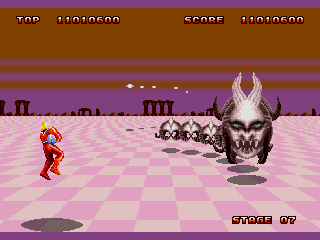 Space Harrier II |
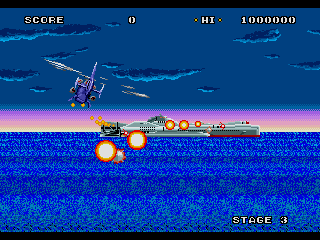 Super Thunderblade |
SEGA could barely recruit any third-party developers. They were all wrapped up with Nintendo/NEC. They tried to bring over some computer developers and established links with Toaplan and Telenet Japan (whom would assist later with the Mega-CD).
1989
There was considerable push to make 1 million units. SEGA CEO Hayao Nakayama would make staff chant "Hyakumandai!" daily to engrain this corporate goal.
1990
SEGA would try to keep the platform alive with arcade ports and the popular genre of the time - shoot'em ups - but the arrival of the Super Famicom in 1990 and the continued growth of the PC Engine kept it in third place. Another competitor in the form of SNK’s Neo Geo AES was added to the mix.
There were a few hits that kept the console from failing outright along with the Mega-CD add-on and its hit RPG game Lunar from Game Arts.
SoJ pridefully ignored the strategies of SoA. The Mega Drive sagged behind the PC Engine system by a quite a margin. SEGA had even supported the PC-Engine machine with releases such as Fantasy Zone, Shinobi and Space Harrier. The launch of the Super Famicom all but halted any future success but it had still proven more successful than the 8-Bit Mark III/Master System.
1991
Later that year, Sonic The Hedgehog was released. It was slightly improved over the Western version with some extra graphical effects and bug fixes. Perhaps SEGA wanted a more polished game for a territory where the console was struggling the most?
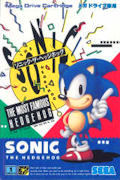
Sonic The Hedgehog (Japanese)
By the end of 1991 some 2 Million consoles had sold and SEGA had released a special edition console. SEGA were reluctant to release sale figures as they were trailing so it is unknown whether this was total sold since launch or the amount sold that year.
1992
Street Fighter II had become a massive game around the world when released in the arcades in 1991 entitled Street Fighter II: The World Warrior. It may have single-handily arrested the decline of arcades so a home port of the game was inevitable.
Released on the Super Famicom June 10th 1992 and the US just some days later. A major factor of this release was that it was to be an exclusive meaning no other console would get a port for a least a certain period of time. This gave Nintendo a huge advantage over SEGA. Needless to say, it was a massive success on the console also and further drew attention away from the Mega Drive.
1993
The redesigned Mega Drive 2 (along with the Mega-CD 2) was released for 12,800 yen.
1994-1996
By now the Saturn had been released a year prior and all of SEGAs energy was behind that and SEGA discontinued the console with their last release in December.
The MD ultimately went on to achieve reasonable sales across Japan though the total number of consoles sold is unknown. Although never matching the runaway popularity as the Western markets, enough consoles were sold to make sure SEGA were to be a credible threat to Nintendo and NEC alike.
Last Release: Madō Monogatari I, an RPG released by Compile on the 22nd of March 1996.
North America
Launched: August/September 1989 Available Titles (6): Alex Kidd: The Enchanted Castle, Altered Beast, Last Battle, Space Harrier II, Thunderforce 2, Tommy Lasorda Baseball.
After frustration and disappointment in Japan, SEGA hurried the release into the US market before NEC with its remodelled PC-Engine and Nintendo with upcoming Super NES (SNES).
Here, the Master System had performed poorly and offloaded onto the inexperienced Tonka Toys whom performed worse. SEGA sought another distributor for this system and approached Atari whom rejected the console on the grounds of being too expensive.
It was renamed to Genesis for the US due to 'Mega Drive' already been trademarked by another company. It also had the convenient message of a resurrection which is exactly what SEGA wanted from the failed Master System. In Hebrew the word genesis meant "in the beginning" which is what exactly SEGA was doing with their new console.
The system had a soft launch in 14th August with the official being 15th September costing $190 which included Altered Beast.
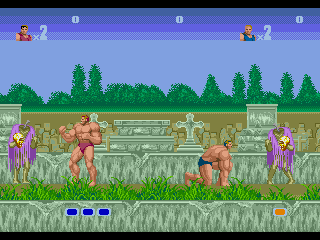
Altered Beast (Genesis)
SoA was now headed by new management. Michael Katz (Katz) who had a wealth of experience in the business at Atari and became SoAs president a month after launch. SEGA again focused on the 'Arcade-at-Home' experience. He identified SEGA had three main issues: advertising, games that appealed to western audiences and third-party support. He devised a plan to tackle all three.
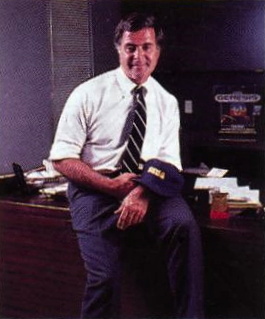
Michael Katz at SEGA (1989)
Nintendo still had developers under exclusivity agreements so getting big third-party franchises was not an early possibility so the idea was to license celebrities instead on new games instead.
Katz felt that sports games were the key to the North American market and the first high-profile signing was Joe Montana. Soon after, Tommy Lasorda, Evander Holyfield and then none other than Michael Jackson which was quite a massive coupe for SEGA as this during the Moonwalker era.
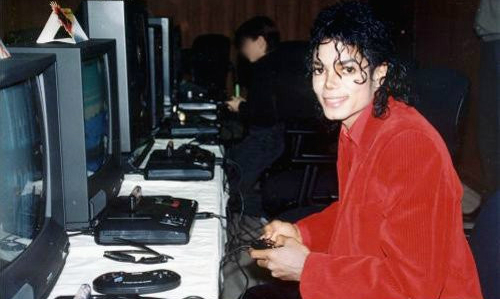
Michael Jackson playing Genesis games on Bad Tour
Enter in Electronic Arts (EA) – who it has been established were instrumental to the success of the Genesis in the early days - announced to SEGA that they had reversed engineered the system bypassing its security and would release its games regardless if EA got a favourable licensee agreement with them or not. John Madden franchise was in development and EA needed the cash. A clever/fearful SEGA (you can decide) did not want any bad publicity and so EA got its wish. They quickly churned out a wave of impressive titles none other than John Madden Football selling by the millions. Also, Joe Montana gave the Genesis two massively successful football games.
As an aside, this is the story as to why some early EA cartridges have issues with consoles manufactured between certain dates.
By now, Nintendo was getting a bullyish reputation with Western developers. This would prove beneficial to SEGA whom presented a much friendlier face to third-party developers. The Genesis quickly gained momentum as a viable new platform with developer friendly owners.
This was boosted by brilliant marketing to promote the fact they had a superior product and throw it in the face of Nintendo such as the successful (and now classic) campaign "Genesis Does What Nintendon't" the console was well received and gamers instantly could tell the difference between this new company SEGA and Nintendo with ageing NES hardware.
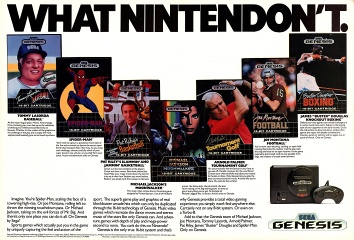
Advert: Genesis Does What Nintendon't
Getting retailers onboard was an issue. Once several were onboard and the advertising got people talking it became a bit easier mostly thanks to the efforts of Shinobu Toyoda at SEGA and soon more consoles and games were on more shelves.
By the end of 1989, 500,000 consoles had sold. Katz left SEGA after failing to hit 1 million but the groundwork for the future success had been set.
1990
SEGA established a relationship with Disney leading to the release of Castle of Illusion Starring Mickey Mouse and later Quackshot with Donald Duck. This important relationship would last throughout the console's lifespan.
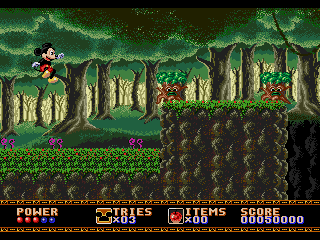 Castle of Illusion starring Mickey Mouse (Genesis) |
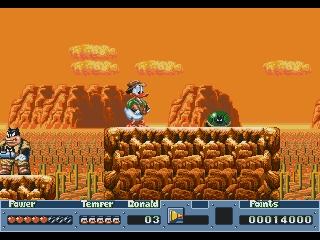 Quackshot starring Donnald Duck |
As an aside, this moment in gaming history played host to a landmark case: SEGA vs Accolade.
The main driver for early success of the Genesis was SEGAs links with EA. The John Madden Football series would prove a staple of the console and rapid growth for EA. It was a period that saw EA go from near bankruptcy to a major player in the industry. EA put out more impressive games such as Bukodan: The Martial Spirit (1989) and Populous (1990) that ensured wider appeal.
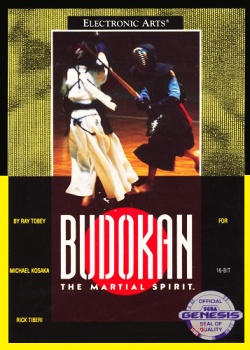 Budokan: The Martial Spirit |
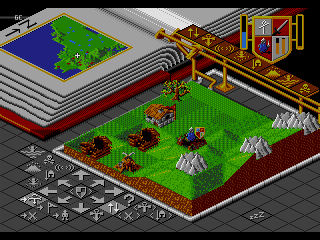 Populous |
Whilst the Super Famicom had hit the Mega Drive hard in Japan, by the time Nintendo was to release their 16-Bit machine to the US, the Genesis had fortified and by 1991 success was sealed.
Over 1 million consoles had sold by the end of 1990. "Hyakumandai!"
1991
SoA now had a new CEO: Mr Tom Kalinske (Kalinske) and SEGA had embarked on a mission for a mascot which had concluded with a blue hedgehog. Katz remained as president for several more months.
By now the Genesis had been stomping all over the NES for 18 months. There was the general assumption that the Super NES would arrive in several months and once more Nintendo would quickly dominate and whilst everyone predicted SEGAs demise at this time that is not what happened.
Newly joined Kalinske set about devising a plan for future success remaining strong in the face of Nintendo's new system and after few months made some conclusions.
The price of the console was still relatively high at $189 and ran the risk of becoming a 'rich-kids' console. A price drop was required.
He thought the 'Arcade-at-Home' message was too limiting. Indeed, with support from the likes of EA the Genesis now had a range of games in its library and should now be presented as an experience all of its own. And along those lines, including Altered Beast needed to be reconsidered. It was possible the imagery of zombies and sorcery was limiting adopters in the more religious US, and by now it was an average arcade game. He wanted the new upcoming mascot title Sonic The Hedgehog included from the day of its release.
Marketing needed to be bolder and promote an image of SEGA that would clearly define them.
He took his plans to Japan where there were promptly shot down but crucially SoJ CEO Nakayam had confidence and entrusted their execution.
The Genesis was then lowered to $149.99 and advertising increased in both style and frequency.
Advertising the better performing CPU of the Genesis was just the start. The "Welcome to the Next Level" campaign punctuated with the SEGA Scream was launched giving them a much edgier persona that fuelled the console wars in the playgrounds.
Sonic would be included upon release. Katz thought that American kids would ignore this not being able to relate to Sonic as they would never have seen a hedgehog. Much more info about Sonic's inception can be found in the Sonic Feature.
Whilst the marketing was solid, earning the confidence of other companies was still proving to be a challenge. Nintendo's dominance had made the marketplace inhospitable to newcomers and whilst SEGA were being successful large retailers like Wal-Mart were still refusing to stock the console. It would take an unorthodox and all-out assault to get Wal-Mart to relent and SEGA consoles on their shelves.
June 23rd and arrived Sonic The Hedgehog - one of the slickest and dazzling platform games ever made providing a showcase for the Genesis hardware. Not only that but high profile endorsements from the likes of Michael Jackson helped.
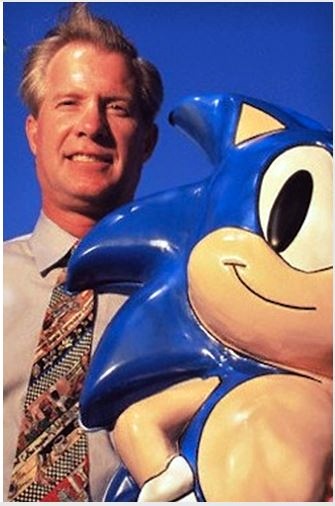
Tom Kalinske and Sonic The Hedgenog
The Super NES with Super Mario World (SMW) launched for $199.99. Both were killer apps but Sonic was positioned perfectly for SEGAs strategy. SMW was still very 8-Bit whereas Sonic represented a true revolution with spectacle and speed. Mario looked like an aged has-been.
Sonic, not only marked explosive success for SEGA beating off the Super NES and slowing Nintendo's plans to a gradual halt, but also captured the imagination of more developers who could now see that the system was capable off such as David Perry of Shiny Entertainment (Earthworm Jim).
By this time, NECs TurboGrafx-16 was no longer competition.
1991 saw the Genesis outperform the Super NES on all levels. Outselling 2:1, more first-party releases and marketing aimed at the older now 'mature' gamer as the cheaper but 'cooler' system. Nintendo typically targeted the younger audience and cleaner image – something they would play dirty with in an upcoming scandal regarding a certain FMV based game.
1992
By April, Nintendo lowered the price of the Super NES again from $179.99 to $149.99 so SEGA dropped the price of the Genesis with Sonic to $129.99.
By June, at the Summer CES in Chicago, SEGA announced a solo Genesis package for $99.99. This was a great move as by this point the Genesis library contained several big hits that new adopters could choose from. All the other competitors reduced their prices in response.
SEGA also wanted a port of Street Fighter 2. Still a massive game worldwide. Capcom Japan were weary having been close partners of Nintendo for many years with lucrative rewards. Yet, a deal was struck at the Summer CES in Chicago and Capcom became an official third-party developer. Not only was SF2 coming to the Genesis but an enhanced edition ‘Champion Edition’ with rebalanced gameplay and playable bosses. Capcom outsourced this port which was typical practice for them at the time.
Development was kept very secretive and by the autumn the gaming press was buzzing with news of this port despite never being officially announced. What was considered factual was: it was based on the Champion Edition, A large cartridge size of 16Mbit (few games had this capacity at the time) and a new 6-Button controller.
By Christmas, the Genesis was the biggest selling item/toy backed by the massive Sonic The Hedgehog 2 – a hugely awaited sequel – and went on to become one of the biggest selling 16-Bit games – if not ever (clarification needed).
There are conflicting sales figures for the total of 1992 with SEGA claiming 4.5 Million sold bringing a total of 7.5 consoles now sold. However, both SEGA and Nintendo claimed top spot for that year. Nintendo had great success with its exclusive console port of the revolutionary Street Fighter II released earlier that year and the Genesis port was slated for the February 1993.
This success was enough to establish SEGA of America in Redwood City, California. Beginning as a mere distribution operation with main decisions taken in Tokyo, it had now become a major player and current leader in the world of console games.
1993
This year would see SEGA the launch of the launch of the SEGA-CD and the introduction of the 6-Button controllers which became a standard.
Street Fighter 2: Champion Edition started being delayed from February for reasons cited as being legal linked to the console exclusivity deal Capcom had entered.
March 10th SEGA US held a worldwide press audience press conference revealing that Capcom were now an official licensee and along with the official announcement of Street Fighter 2: Champion Edition with a prototype of 6-Button controller with a release date in June. Near complete playable versions of the game were available with very positive reports. Everything looked great.
Just a short while afterwards, Capcom announced a superior version to this Championship Edition. Dubbed SF2: Turbo Hyper Fighting for the Super Famicom/SNES and weighing in at 20Mbit and a July release in Japan. Compounding this, Capcom Japan suddenly became very unsatisfied with the quality of the port of Champion Edition and decided to scrap it! The game was so close to completion that even box art had been produced.
It's safe to say SEGA were furious at Capcom for not only scrapping a promised port they needed in their library so close to release but they had also produced a more superior port on their main competitors console at the same time. Capcom’s solution was to create ‘Special Champion Edition’. This was programmed by Capcom themselves and to come inside a whopping 24Mbit cartridge.
The gaming press were confused with several going ahead publishing full reviews/extensive previews of a game that had now been scrapped.
SEGA ramped up marketing with the introduction of the term 'Blast Processing' to drive the fact that the Genesis was still the faster console and therefore superior to the Super NES. If you were a fan of action games, then Blast Processing was needed and other consoles were too slow. This worked to such a degree that Nintendo took out 2-page spreads to counter a growing reputation the Super NES was getting of being inferior. Ultimately this led to the Genesis being synonymous with faster and more responsive games (action/sports) whilst the Super NES had the colourful prettier games with its Mode 7 special effects but slower.
Michael Jackson was still endorsing the system being such a fan of Sonic that he and his team were scoring the soundtrack for the upcoming Sonic The Hedgehog 3. Unfortunately, the media scandal of the time meant that SEGA had to distance themselves and a large amount of work never came into the public domain. As an aside, this is the reason why Sonic 3 is no longer included in compilation titles due to legal issues with the Jackson estate.
In June, at the Summer CES, the Genesis 2 – a remodelled sleeker console (alongside with the SEGA-CD2) – had been displayed and would be ready Christmas.
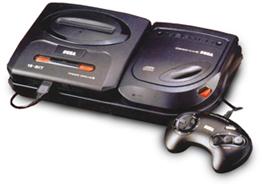
Mega Drive 2 and Mega-CD 2
Also, SF2: SCE was officially announced June 3rd for a September release with a very early prototype on show. Compared to the new Turbo Hyper Fighting version it looked shite.
By release time (September), the delays meant that it had a competitor: the console port of Mortal Kombat.
By December there was also SEGAs own Eternal Champions – a direct competitor.
That Christmas season saw the Genesis having 3 fighters and Turbo Hyper Fighting on the SNES.
Thankfully, SF2:SCE was a decent success and was clearly a superior product overall as it incorporated both rulesets of Champion Edition an Hyper Fighting an unique to the Genesis. It introduced the 6-Button controller that became standard (the game was still playable with the traditional 3-Button controller) and the new SEGA-Capcom relationship would ensure more future titles.
Approximately 5.9 million consoles had sold that year.
1994
SEGA launched their pioneering SEGA Channel Service. It allowed gamers to download games via unique Cable TV Service. It was reasonably successful lasting until 1998. For more info checkout the link.
However, the year would see major rifts form within SEGA itself that would see major mistakes made. It would see the launch of the ill-fated 32X add-on as Nintendo were beginning to catch-up after hit releases such as Starwing, new releases such as Super Metroid and land a major hit with Donkey Kong Country for Christmas. It was a reminder that Nintendo had never gone away.
Sonic & Knuckles and NFL '95 sold less than expected. Sales figures compiled by separate companies suggest that either company was the most successful that year.
Approximately 18 million consoles had sold by the end of 1994.
1995
By now it was clear that the SEGA CD had been unsuccessful and the 32X only recently released was showing serious signs of trouble. The Saturn was on the horizon (already launched in Japan) and SoA were taking orders from SoJ despite objections about what was better for the US market.
By spring, SEGA began winding down Genesis operations in order for the surprise Saturn launch.
In October, the Genesis Nomad was released at a cost of $180. It was a fully portable version of Genesis hardware with a colour screen that also provided an additional controller port and TV-Out. It failed to catch on due to high price and poor battery performance.
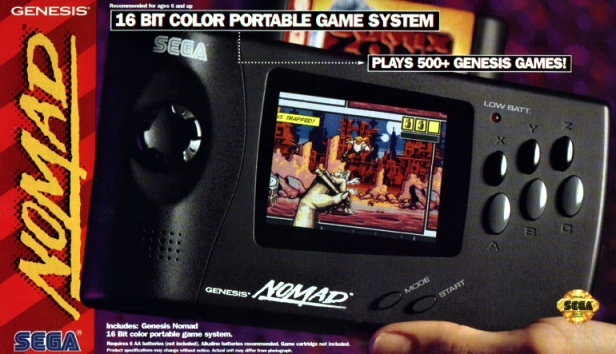
Genesis Nomad Box (Front)
1996
SEGA, now with its full weight behind the Saturn, contracted Majesco Sales to manufacture Genesis consoles which would continue until 1998 along with Game Gear consoles.
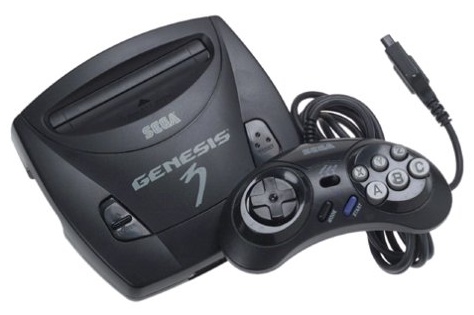
Genesis 3 Console
A few first-party releases happened. Vectorman 2 a follow-up to a very impressive game, Sonic 3D and several compilation titles. There was a few from third-party developers the most notable being Frogger.
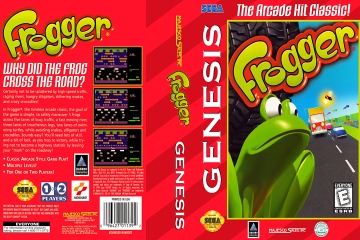
Frogger (Case)
SEGA expected a major drop in 16-Bit sales as soon as 32-Bit consoles arrived. The Saturn was already on sale and the price of the Genesis was dropped to $99.99. There was still support from third-party developers and sales surged with 2 million consoles selling with supply failing to meet demand.
Total sales for 1996 were 1.1 million consoles with 3.3 million games sold.
In context the Saturn had been on sale for 18 months earlier and for the most part was dying.
1997
Whilst the Genesis was now end-of-life reflection on its performance was reported to have been 1:16 console to games ratio vs 1:8 for the Super NES.
At the E3, the price was dropped again to $79.99 with a range of pack-ins.
Europe
Launched: November 1990 Available titles (7): Alex Kidd: The Enchanted Castle, Altered Beast, Columns, Golden Axe, Space Harrier II, Super Thunderblade, Thunderforce 2
The console market in Europe was still rather small as the computer market was still large. 16-Bit computers such as the Amiga and Atari ST had been available since the mid-80s and were now becoming cheaper an almost opposite situation in the US and Japan.
SEGA were already popular in Europe thanks to arcades and a highly successful Master System with the UK being their stronghold. Nintendo were busy marketing their newly arrived Game Boy at the time.
The introduction of the Mega Drive across Europe was somewhat disorganised as SEGA had no official distribution channels and the task was undertaken by Virgin (Mastertronic)(VM) but general availability of the console was by the end of 1990.
In the UK, it launched during the European CES in September costing £189.99 including Altered Beast. 30,000 consoles had been pre-ordered with the target for 40,000 by the end of 1990.
By now, gamers really interested in getting a Mega Drive had imported one either a Japanese consoles modded for TVs and Voltage or the PAL Asian systems. Importing was slightly more expensive for both consoles and games. It had been made known that PAL games would not work on these imported machines without adaptors. These third-party adaptors appeared very quickly.
It was estimated some 140,000 import consoles were already in the UK before the PAL launch which generated attention for media import games. VM issued warnings regarding imports but these were largely ignored. Video [rental] shops offered the hiring of Asian PAL Mega Drive consoles with 2 games for £10 per day and games alone with £3 per day.
Computers remained the main competition for the first two years having a large installed base and those wanting new games could get them relatively cheaply and easily from floppies or cassettes on the front of magazines or their local newsagents. But the Master System had already started eroding that market.
NEC notoriously changed its mind several times over the idea of selling the PC Engine in Europe. The UK and Spain eventually saw the console in the form of the TurboGrafx.
There were two other attempts at the console market from otherwise industry heavyweights: Amstrad GX4000 and the Commodore 64 GS which were console derivatives of 8-Bit computers and they failed almost immediately with less than a year on the market.
The only substantial competition was the NES which the Master System defeated easily from the start and the aging Atari 2600. The Super NES was almost 2 years away for Europe.
The Mega Drive sold well initially and sales continued as more games came from SEGA such as ESWAT, Forgotten Worlds, Golden Axe. EA again helped with a wave of impressive games such as Budokan, John Madden American Football and Populous.
Third-Party developers were slightly easier to bring on board. With the success the Commodore Amiga had and its similarities with the Mega Drive made development easier.
1991
In April the price was dropped to £149.99 in the UK with 85,000 official PAL consoles sold.
By June 193,000 had sold across Europe.
June saw the simultaneous release and inclusion of Sonic with the US. The Sonic Boom also ripped through Europe driving sales up further and further.
In September there was another price drop in line with the US to £129.99 which now included Sonic.
A distinctive TV campaign followed with the Cyber Razor Cut featuring Jimmy whom would be in several SEGA TV spots played by star of British TV Peter Wingfield.
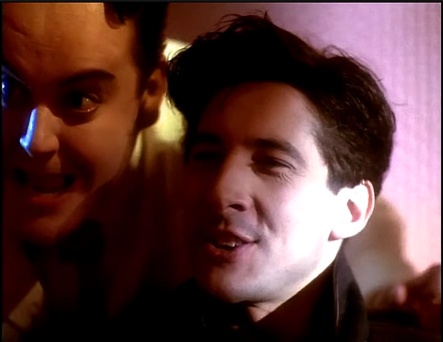
Advert: Cyber Razor Cut
By now, Mega Drive (and Master System combined) had started a major shift in gaming culture. No computer could match Sonic and cost several times more. Consoles, and particularly SEGAs, were now the standard for gaming.
At the end of the year, 225,000 consoles had sold in the UK, and 815,000 in Europe.
1992
The arrival of the Super NES in April failed to take the top spot for Nintendo. Sonic mania was gripping the UK especially in the months prior to its highly anticipated sequel where it was possible to buy merchandise such as t-shirts for the game way before its release.
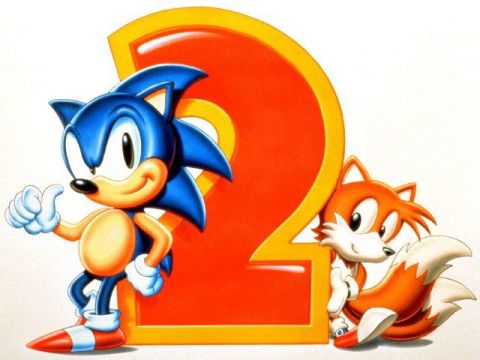
Sonic 2 Pre-Release Artwork
With the fanfare of 'Sonic2uesday', Sonic 2 became a massive seller.
For Christmas, SEGA still did not have a port of the massive Street Fighter II – but this seemingly did little to hurt their performance. Sonic 2 continued to sell huge amounts and this was bolstered by the massive Streets of Rage 2 (still critically acclaimed to this day) and was the systems first ever 16Mbit cartridge.
This resulted in a massive year overall which by the end of 1992, over 1 million consoles had sold in the UK alone.
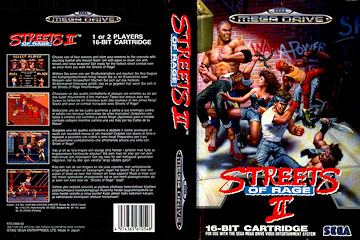
Streets of Rage 2
1993
After the massive Christmas of the previous year, the Mega-CD launched in April to boost the capabilities of the Mega Drive further but its adoption was low due to its high price.
An array of third-party developers had now come onboard several from the UK such as Codemasters and Psygnosis and Shiny with the games library grew substantially.
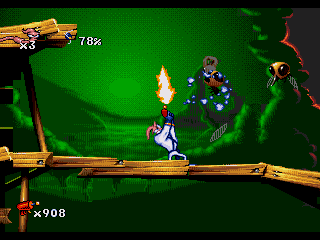
Earthworm Jim
Such as the popularity of the Mega Drive it had garnered the attention of established UK electronics manufacturer Amstrad. They created a combined Mega Drive and PC for a cost of £999.99. Its high price for what was an underpowered PC of the time meant it failed to catch on.
The eagerly awaited Street Fighter 2: Champion Edition did not see its June release following the snap scrapping by Capcom. This was bad news for SEGA Europe as this was their strongest territory and lacking a killer app.
The redesigned Mega Drive 2 alongside the Mega-CD 2 were released in August to major retailers such as Dixons. The Mega-CD 2 in particular saw a somewhat botched released across Europe.
October 29th finally saw the release of SF2: SCE along with the new 6-Button controller. As expected, it was a massive seller for the rest of the year though Mortal Kombat encroached on this as did SEGAs own Eternal Champions to a lesser degree.
1994
Whilst SoJ and SoA reluctantly were beginning to shift their focus toward 32X and Saturn, SoE was still making great first-party releases with Sonic 3, Eternal Champions with Virtua Racing showing the direction was going in along with acclaimed third-party releases continued such as Urban Strike.
Nintendo hit big with Donkey Kong Country for the Super NES in time for Christmas whereas SEGA had released the 32X with the likes of Star Wars Arcade.
Some 2.5 Million consoles had now sold in the UK.
1995-1998
1995 saw some of the most sophisticated and impressive Mega Drive games released.
In 1996, the Mega Drive was discontinued probably prematurely in favour of the Saturn but had become extremely popular and the dominant console. It was still popular even after the launch of the Saturn and it continued in retail up until 1998 where it could be picked up with 6 games for around £60 in most high street stores.
Within 5 years it had changed the face of gaming across Europe from computer-based to dedicated consoles.
The IBM PC had been promptly devouring the markets of micro-computers for a few years with mice and keyboards for gaming over joysticks. A new trend would see any PC games that were enhanced for joysticks likely ported to consoles instead. This also happened in reverse to a small degree as SEGA released the Mega Mouse accessory.
9 million consoles sold across Europe.
Last Release: FIFA: Road to World Cup 98, 17th of June 1997 from EA.
Brazil
Similar to the Master System, Tec Toy distributed the system where it became a big hit throughout much of the 90s. This region has a number of unique titles with one of the most ambitious being Duke Nukem 3D.
Legacy
Ultimately, over 30 million consoles were sold and remained in retail for some 10 years making it SEGAs most successful system ever. The impact of the 16-Bitter on the gaming industry cannot be underestimated. SEGA was at its most bold and enjoying a period of immense success that the company would never quite reach again. It also was the platform that solidified SEGAs image with the introduction of Sonic The Hedgehog.
North America was the main battlefield and so intense that documentaries and books have been written about this era as debate rages as to who actually won as SEGA had Majesco manufacture consoles also. Excellent examples being Console Wars: SEGA, Nintendo, and the Battle That Defined a Generation by Blake J Harris.
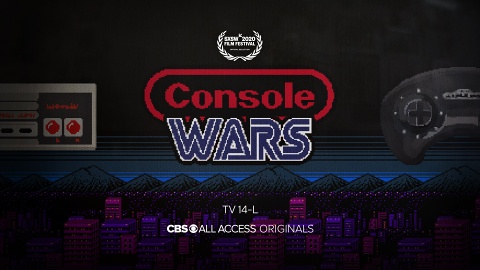
Console Wars Documentary
The battle was also a driver behind making the exclusivity contracts Nintendo had locked their third-party developers declared illegal changing the industry and allowing SEGA much needed support. Nintendo had effectively regulated the entire industry themselves by this point.
It changed the industry by facilitating the rise of EA as the largest developer in the world, sparking the debate about violence in games leading to a ratings system which is still in use today and clearly demonstrating that add-ons for consoles rarely succeed. The core system itself easily survived the two upgrades released being unsuccessful (Mega-CD/SEGA CD and 32X) which likely laid the foundation of lost consumer faith. Judgements aimed at the platform are usually at these peripherals. The addons lost SEGA some battles but they most certainly won the war.
The success of the system saw SEGA having established distribution channels (across Europe) and such as the success of the console in Europe it established the FIFA franchise which not only would be the last release in 1998 but also continues to this day.
It may be the most remodelled and redesigned console ever. Check out the model gallery for examples. It even served as the basis of the Genesis Nomad.
Its design then derived more arcade boards; Mega-Tech, Mega-Play and System C-2 allowing a large number of games to be present in the arcades.
As such as the popularity of the system in the UK, the 25th anniversary saw a jump in sales of the AtGames console (the one with the cartridge port) by some 400%!
The Mega Drive/Genesis Today
So today, the system is still very much in the hearts and minds of gamers with hordes of fans still playing, and thanks to modern development kits new games continue to be released, making it still an active platform today.
Original hardware is steadily increasing in price as are some of the rarer games especially the last of the European releases.
New officially licensed controllers are being made by RetoBit and are of superb quality.
Preservation of the software is excellent with superb emulation on multiple platforms.
The SEGA AGES and SEGA Forever brands regularly see enhanced versions of classic titles revived every few weeks. The official compilation releases are always very popular and feature many classic games the most recent Xbox One and PS4 contains 50 games.
There have been numerous re-releases of hardware by third-party manufactures in previous years with some portable and some resembling a console. The specifications of these vary. For example, there are console versions with and without a cartridge slot and portable versions with or without an SDCard slot along with the selection of built-in games varying. Always check the reviews for these. The most recent being from Tec Toy which has the style of the Asian Model 1 and has enhancements such as an SD card slot for more games and updates.
In 2019, SEGA released a Mini-Version of the console along with 40 built in games. Whilst there had been similar releases by third-parties this one was official. To compliment this are non-functional accessories of the Mega-CD/SEGA CD and 32X for the completist look.
SEGA has embraced the continued love for the console by offering items on their official SEGA shops such as stationary, gadgets and clothing.
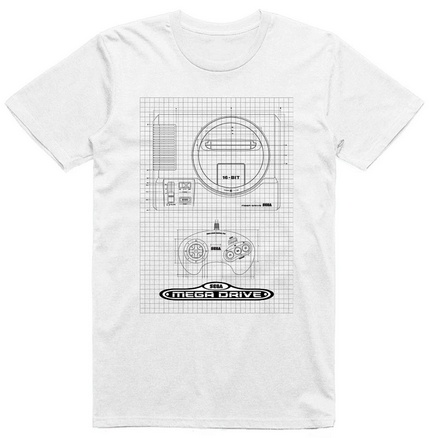
Mega Drive Technical Specifications Tee
Plenty of community websites exist dedicated to the system offering historical finds, reviews and other content such as soundtracks, game hacks and prototype/unreleased games now surfacing. More interestingly, there is a very active homebrew scene and coding competitions that produce some astonishing results from the hardware and well worth a look. Check out the links section below for URLs.
New releases from 2019 include: Canon: The Legends of the New Gods (RPG), Switch Blade (horizonal shooter) and Thunderbolt 2 (vertical shooter) From Piko Interactive and for 2020 new release is slated for September being Mad Stalker: Full Metal Forth a port of a X68000 game.

